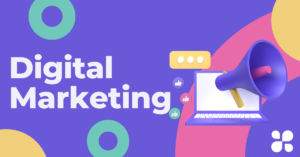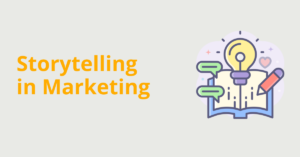In an age of social media, instant messaging, and so on-there in lies the fulcrum of artificial intelligence by itself-certainly remains one of the most effective channels for businesses to maintain a resonance with their audience. The newer digital channels steal the show often, but email has persisted in its consistency, regardless of the size of businesses. This blog will look into why email marketing is still relevant, to say nothing of its benefits, key strategies, and best practices to succeed in your campaigns for 2024.
Why Email Marketing Still Has a Role to Play
As this communication platform ecosystem keeps on growing, so does an individual's daily interaction with emails. As of 2023, over 4.3 billion users across the globe had an email account and that number is likely to keep on increasing. It is the nature of personal communication between businesses and consumers that makes email marketing inimitable-to ensure direct and personalized communication.
Email is the only sort of social media where an algorithm decides what people see. A message is read immediately by the recipient, and what that recipient sees is entirely within a business's control.
Email allows businesses to say what they will in an organized and measurable way. And, when done right, it can actually foster loyalty, increase conversions, and generate huge revenue streams.
Benefits of Email Marketing
Email marketing now has many advantages over other forms of marketing media. Let's view a few of the most important benefits:
1. Economical
Email marketing is one of the most cost-effective marketing strategies one can make use of. There are low costs to make provisions for an ESP, and it reaches thousands or millions of customers, giving email a high return on investment. According to various studies, every dollar spent by businesses on marketing via email amounts to an average return of $36.
2. Highly Personalized
One of the significant features of effective email marketing is personalization. While social media advertising relies on demographics and high-scale targeting, email enables businesses to forward the content to their subscribers as per their individual needs. Email list segmentation on behaviors, demographic, and preferences can ensure that tailored messages reach an individual, thus culminating in increased engagement and conversion.
3. Direct Communication and Targeting
Email allows business interactions to directly reach the audience. Unlike social media, where posts get lost in between ever-changing algorithms that many a time might get missed or ignored, email goes straight to the subscriber's inbox. With emails, companies can directly send targeted messages to users who have already displayed some interest by subscribing.
4. Trackable Results
One of the significant benefits of email marketing is that it is trackable. Email marketing platforms provide rich analytics that allow business organizations to track several pivotal metrics including open rates, clickthrough rates, and conversion rates. This helps businesses refine their strategies and improve future campaigns.
5. Builds Relationships and Customer Loyalty
Email marketing allows businesses to have a time relationship. It could stimulate, educate, and nurture the subscribers as well as establish trust and loyalty within a long period of time. Emails are preferred mediums for nurturing leads for educational content, including exclusive deals given to loyal customers.
Important Elements of an Email Marketing Campaign
The best way to get good mileage from email marketing is an optimum strategy by a business. Here are the vital components of an effective email marketing strategy:
1. Building a Quality Email List
Your email list is the bedrock of your email marketing. The more extensive the number, the less it matters in comparison to the quality of that email list. The best will be when subscribers have enlisted themselves voluntarily. Never, ever buy email lists; this will boost a big unsubscribe rate and stain your sender's reputation.
You can naturally grow your list by using sign-up forms on your website, blog, or social media sites. Offer free discounts, exclusive content, or resources to customers that create demand for them to subscribe.
2. Segment Your Audience
Segmentation allows you to break up your email list into smaller chunks according to certain criteria. It could be behavior, demographics, purchase history, or levels of engagement. Segmentation will ensure that your subscribers get content that is relevant to them and might, in fact improve the engagement rate significantly.
For instance, you can create separate campaigns for first-time buyers, loyal customers, or inactive subscribers. The more you segment your messages, the more relevant and personalized your emails will be and, accordingly, the conversion rate will be higher.
3. Create Engaging Copy
The contents of your emails should be value and interesting and should go in line with your brand's voice. This could be anything from a newsletter, offer, or information update; the content should matter to your audience.
Write in clear and concise copy and use attention-grabbing subject lines that encourage subscribers to open your email. Ensure that the body is readable with great images, a strong call-to-action, and relevant links.
4. Adopt Automation
Email marketing automatizes emails, so that a specific business can send out emails targeting specific customers to spend based on the actions of certain behaviors. For instance, you might have some automation to send off a welcome email to new subscribers, abandon cart reminders for the online shopper, or birthday discounts for the loyal customers.
Best Practices for Email Marketing
To get more out of your efforts in email marketing, here are best practices for you to consider:
1. Crafting an engaging subject line
The subject line is the first thing everyone sees when they receive an email. Sometimes it will make all the difference in whether someone opens your email or not. So, write subject lines that clearly convey a message, compelling, and to the point. Use personalization-kinda stuff, such as writing out the subscriber's name, and use urgency when necessary.
2. A/B Testing Your Emails
A/B testing or split testing allows you to test several versions of your email in order to know which will get you a better performance. This can be for various aspects such as subject line, layouts of the emails, different CTAs, and images so you know what resonates with your audience. This will constantly test and optimize and improve your emails over time.
3. Send at Consistent Schedule
Consistency is the keyword to email marketing. Schedule your emails, whether it is on a weekly basis, bi-weekly, or monthly. This is how people build trust with your audience, and they'll be ready for and looking forward to your content.
4. Monitoring metrics and enhancing the strategy
Monitor the performance metrics of your emails from time to time, measuring open rates, click-through, conversion, and unsubscribe rates. Use these data for adjusting strategy, improving content, and changing your approach.
The Future of Email Marketing
Advancement in technology will bring further upgradation in email marketing. Emerging trends like AI, predictive analytics, and dynamic content are transforming the face of approach towards business applications of Email marketing. AI tools can help businesses analyze customer data, predict behaviors, and personalize content at scale.
With email marketing, it will integrate with other channels of digital-social media and e-commerce-results in the very seamless customer experience, amplifying the power of email marketing.
Conclusion
Email marketing still happens to be one of the most effective tools in a business's arsenal. Given its high ROI, the feature of personal communication, and its direct-to-consumer reach, email will continue to allow businesses to meaningfully engage audiences. The creation of a high-quality email list, compelling content, and automation leverages the ability to drive conversions, nurture relationships, and establish long-term success through 2024 and beyond.




